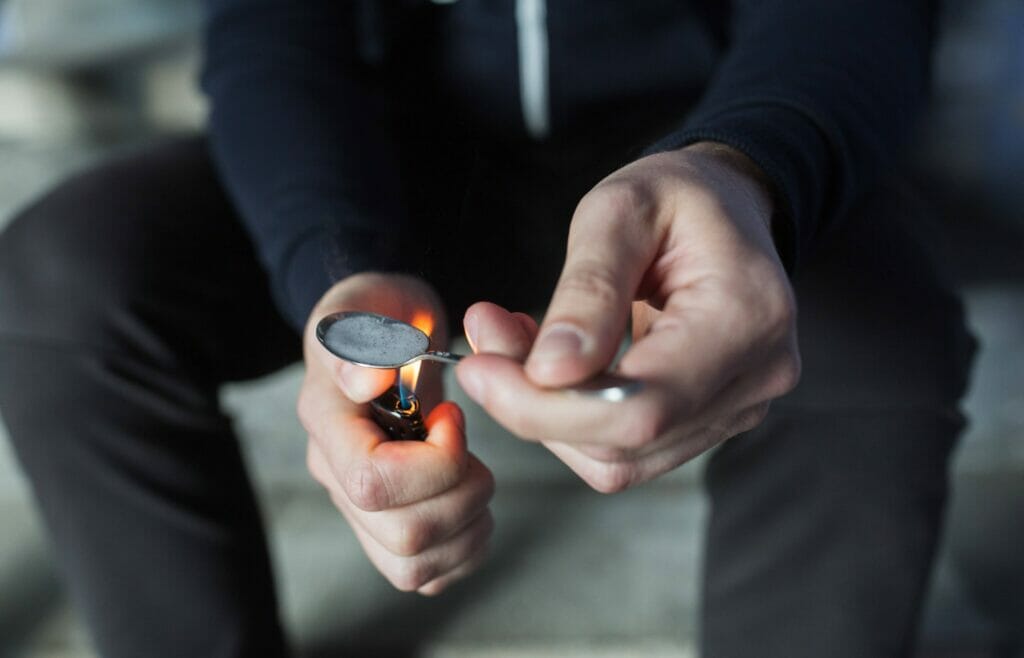Why is Crack Cocaine So Addictive?

The National Substance Abuse and Mental Health Administration reports that cocaine is the second most used illicit drug among users 12 years and older. That figure also includes users who reported partaking in a processed version of cocaine, such as crack cocaine, in the past year. In 2021, almost 1 million people aged 12 or older reported using crack cocaine in the past year. One study even showed that more than 30 percent of people who smoked crack began showing signs of cocaine dependence within two years of their first use.
With those stats in mind, it’s easy to see that crack cocaine is a highly addictive substance. But many people find themselves wondering why it’s so addictive. Today, we’ll answer that question and more as we explore the facts behind crack cocaine.
The Differences Between Crack Cocaine and Cocaine
Cocaine is a white or off-white powder made from the dried leaves of the South American coca plants. Crack cocaine is created by heating that powder and mixing it with water and cornstarch to form a solid rock in varying shapes and sizes. The name “crack” comes from the cracking sounds it makes when heated. It is also called “rock” due to its rigid, sharp feel. Despite originating from the same source, how crack cocaine is processed changes its chemical makeup and creates a significantly different but equally dangerous addictive stimulant.
While crack cocaine may be derived from cocaine and shares its highly addictive nature, crack cocaine is often more readily available and affordable. After gaining notoriety in the 1980s as a less expensive version of cocaine, its widespread usage has been maintained over the past four decades. That is in part because it’s not only easy but also inexpensive to produce.
Street dealers will often mix crack cocaine with things like talcum powder and cornstarch or even with other stimulants like amphetamine or synthetic opioids. By diluting the amount of cocaine and combining it with other substances, dealers can move more quantities of crack cocaine and increase their profits. However, those additives can add even more harmful side effects to an already dangerous drug. With all the additives and diluents found inside crack cocaine, on average, only 40 percent of crack cocaine is pure cocaine.
Crack Cocaine’s Influence on the Body
Studies have also shown that crack cocaine’s availability and the fact that it produces a more immediate high when smoked play a part in someone developing an addiction faster than someone who uses cocaine. While cocaine powder is absorbed into the body by snorting it through the nose, rubbing it on the gums, or dissolving it and injecting it directly into the veins, crack cocaine is almost always smoked.
Smoking crack cocaine allows it to be absorbed into the body more rapidly. When heated, the crack cocaine rock crystals produce large vapors that are easily inhaled into the lungs. Often, users will combine the drug with marijuana or tobacco and smoke the mixed substances like a cigarette or through a vape pen.
Crack cocaine’s rapid absorption rate allows it to produce a more immediate and intense euphoric effect by causing the release of brain chemicals into the pleasure centers of the brain. A person smoking crack cocaine may feel its effects as quickly as 10 to 15 seconds after inhaling it. Even though the high from crack cocaine is more immediate and can be more potent than other stimulants, its high only lasts a short time. In most cases, the euphoric effects delivered by crack cocaine only last for less than ten minutes.
Like other addictive stimulants, the more a person uses crack cocaine, the less intense the highs will be as the body begins to build a tolerance. Tolerance causes the user to increase both the amount of crack cocaine and the frequency of use in order to achieve the desired euphoric effect. By using larger, more frequent doses of crack cocaine, the brain, and the body become increasingly desensitized to the drug, leading to a dangerous cycle of needing more and more quantities of the drug and being more likely to engage in crack cocaine binges to hold on to the high.
The Dangers of Crack Cocaine
Regularly using crack cocaine for prolonged periods allows your brain and body to adapt to the drug and become physically dependent. Repeated crack cocaine use can also rewire the brain to make it seem like nothing else is pleasurable other than the drug. However, the immediate high brought on by crack cocaine use is quickly followed by an equally quick “low.”
This low, or what’s known as a “cocaine crash,” has been associated with increased levels of anger, aggressiveness, delusions, and other psychotic symptoms. The crash often felt after using crack cocaine can cause intense feelings of depression, prompting the user to repeat the harmful cycle to avoid those acute negative sensations. A person addicted to crack cocaine can even feel physical withdrawal symptoms, such as muscle tremors, depression, and slowed thinking, within only hours of curtailing use.
How to Break Free of a Crack Cocaine Addiction
Despite crack cocaine’s propensity for addiction, there is hope for treating and ending a crack cocaine addiction. Residential detox centers have procedures in place that decrease the likelihood of relapse and give you a better chance of success at remaining substance-free in the long run. Following detox, trained healthcare workers in residential facilities supply the structure and stability many people need to continue down the road to recovery.
At Midwest Recovery Centers, we’re proud to offer both a residential detox center and tailored treatment programs to give clients the best possible likelihood of beating their crack cocaine addiction. We work with clients on addressing the root cause of what is contributing to their addiction and incorporate other evidence-based methods to provide the type of support one needs to kick their habit.
If you or a loved one are suffering from a crack cocaine addiction, we want to talk. Start your recovery now by contacting us today.
Reviewed and Assessed by
Taylor Brown, B.A.Com., CADC
Tim Coleman, M. of Ed.




